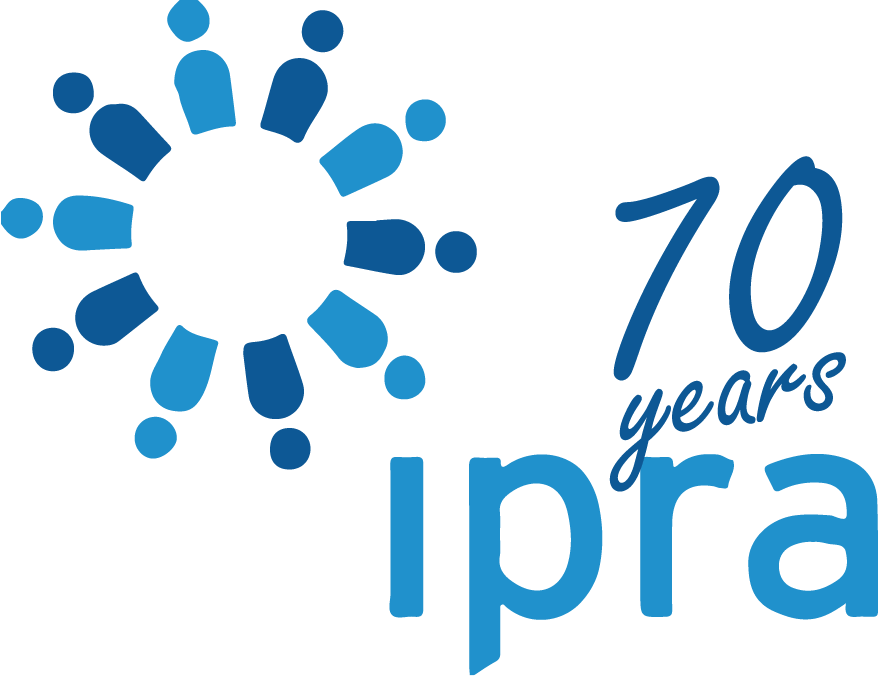ITL #640 The “changemaker” trap: rethinking the “better future” narrative
4 months, 1 week ago
When everyone uses the same “changemaker” narrative, it loses power. To regain trust, communicators must recalibrate. By Caterina Cazzola.
In recent years, a sweeping trend in corporate communications has cast companies as “changemakers” on a mission to build a better future. From startups to global conglomerates, industries have embraced purpose-driven narratives, positioning themselves as forces for good. While rooted in decades of evolving PR and advertising, this narrative has gained unprecedented momentum in the past decade.
While purpose-led branding can be inspiring, it now faces a credibility crisis. Consumers and stakeholders are increasingly skeptical, perceiving grandiose claims as disingenuous or self-serving. This essay traces the rise of the changemaker branding boom, examines the social and economic forces behind it, and argues for a return to grounded, value-based communication.
For public relations professionals, this is an opportunity to rethink the stories we tell, and to ensure those stories stand on solid ground.
The rise of the “changemaker” brand narrative
Until the late 1980s, explicitly purpose-driven campaigns were largely the domain of nonprofits and public service marketing. Most corporations focused on product performance, not ethics. But by the 1990s, environmentalism and social awareness had moved into the mainstream. Brands like The Body Shop and Patagonia carved out loyal followings by aligning with sustainability and ethical stances. They showed that purpose could sell, authentically.
The early 2000s saw purpose take center stage. Dove’s “Real Beauty” (2004) challenged beauty stereotypes, Chipotle’s animated Back to the Start film (2011) championed sustainable farming, and Nike’s “Dream Crazy” ad (2018), featuring Colin Kaepernick, sparked intense debate and ultimately (won an Emmy and) added an estimated $6 billion to brand value.
These campaigns were successful not just for their messaging, but because the message aligned with brand identity (Nike, for example, had long positioned itself as a champion of athlete activism).
At the same time, tech giants began sounding more like NGOs. Mission statements promised to “connect the world” or “empower humanity.” Purpose became an expectation. In 2019, the U.S. Business Roundtable formally declared that corporations should serve, not just stakeholders, but all stakeholders. This merely codified what had already become mainstream: nearly every sector was recasting itself as an agent of positive change.
Purpose, ESG, and the forces fueling the “better future” narrative
Much of this shift stemmed from changing consumer values. A 2020 report from 5W Public Relations, showed that 83% of millennials want companies to align with their personal values, and 76% expect CEOs to speak out on social issues. Gen Z, according to NIQ’s 2024 research is even more attuned to sustainability and equity, treating brands as extensions of their identity.
At the same time, ESG frameworks (Environmental, Social, and Governance) took hold in corporate strategy and investor relations. KPMG’s 2020 survey revealed that 96% of the world’s top 250 companies were publishing sustainability reports, up from just 12% in the early 1990s. This shift illustrates how central sustainability narratives had become to corporate strategy. As a result, communications teams grew fluent in the language of carbon footprints, social impact, and stakeholder value.
The rise of social media amplified these trends. Silence on relevant issues could be seen as complicity, and a single misstep could go viral. Proactively aligning with causes became a defensive, and sometimes trendy, strategy. Campaigns promoting climate action, diversity, and social justice spread across industries.
I don’t doubt that internal motivations mattered too; most people want a sense of meaning in their lives, and that includes their work. The result was a near-perfect alignment of incentives: societal issues provided rich storytelling material, marketing departments had new content to engage audiences, and companies found a way to humanize their image. By the early 2020s, phrases like “changing the world,” “for a better future,” and “improving lives” had become ubiquitous in mission statements and ad campaigns across industries.
A crisis of credibility
The surge in purpose-led branding did raise awareness and even spurred reform. But as the changemaker narrative became ubiquitous, it began to lose credibility. According to Havas Media’s 2021 global study, while 73% of consumers said brands must act for the good of society, 71% doubted they would follow through.
The trust gap deepened. Edelman’s 2021 Trust Barometer found that 53% of consumers believe brands routinely “trust-wash,” presenting themselves as values-driven without real commitment. Even industry leaders raised concerns. Unilever’s then-CEO Alan Jope warned of “woke-washing”, opportunistic social messaging with little substance, calling it a threat to trust in the industry.
Even when intentions are genuine, corporate messaging often lapses into generic language and recycled buzzwords. Many mission statements now sound interchangeable. The overuse of phrases like “making a difference” or “changing the world,” without any specifics, has dulled their meaning. The result, I believe, is a jaded audience that increasingly tunes out purpose-heavy campaigns as just more marketing noise.
A high-tech industry cautionary tale
This phenomenon isn’t limited to consumer brands. In fact, it’s so widespread it’s been parodied in pop culture. In HBO’s Silicon Valley, for example, every startup at TechCrunch Disrupt awkwardly insists its app will “make the world a better place.”
The space sector offers compelling case in point. Space companies, from startups to established aerospace firms, have often adopted the “better future” script. But as Dr. Emma Gatti, a space journalist and communications analyst, has noted, the language often devolves into jargon and abstraction. Press releases extoll visionary missions, but seldom explain how technologies translate into real societal benefit.
As someone who works in space communications, and has often grappled with how to articulate the real-world benefits of complex technologies, I don’t raise this critique to suggest that space solutions lack positive social or environmental impact. But even when operating in a purpose-rich, visionary field like this, credibility hinges on clarity, and because these benefits are often indirect, long-term, or not immediately visible to the public, we must take extra care in how we communicate them and avoid drifting into abstraction, pandering, or borrowing clichés from broader sustainability discourse. Otherwise, the result is a message that aims to inspire but ends up vague and ultimately unconvincing.
Inspiration matters, but it must be rooted in substance
Rebuilding trust doesn’t mean abandoning purpose. It means anchoring it in reality. Brands should clearly explain what their products or services do, the tangible benefits they offer, and only then connect those benefits to broader impact.
Edelman’s 2019 study found that while brand trust is very important, fundamentals still dominate. Consumers care first about quality, convenience, and value for money. If a company can’t deliver on those, no amount of purpose will save it. A good product is the foundation of any credible purpose claim.
Specificity also builds trust; detailed examples of “change” make a message real. Consistency matters too. What a company says must align with what it does, across time and touchpoints.
Finally, transparency. When companies are honest about their ESG progress, including what’s hard, slow, or incomplete, they gain credibility. A modest truth, delivered well, earns more respect than a lofty promise left unfulfilled.
Conclusion: rebuilding trust through a more honest storytelling
The changemaker trend was born from noble intentions and smart strategy. But when everyone uses the same narrative, it loses power. To regain trust, communicators must recalibrate. Focus on what the company truly delivers. Tell the story of the real value it creates, and where it still falls short.
In an era of eroding trust, candor can be a powerful asset. People still want businesses to help solve big problems, but they want proof, not promises. The role of communications is to bridge that gap by conveying evidence in compelling, relatable ways, not by piling on more adjectives. Brands can still inspire, but inspiration must be earned through credibility.
It’s time for changemaker branding to evolve: less grandstanding, more genuine conversation. The path to better communications, in this case, begins with a little more humility, realism, and a renewed respect for the audience’s intelligence.

The Author
Caterina Cazzola
Caterina Cazzola, Chief Communications Officer, D-Orbit.
mail the authorvisit the author's website
Forward, Post, Comment | #IpraITL
We are keen for our IPRA Thought Leadership essays to stimulate debate. With that objective in mind, we encourage readers to participate in and facilitate discussion. Please forward essay links to your industry contacts, post them to blogs, websites and social networking sites and above all give us your feedback via forums such as IPRA’s LinkedIn group. A new ITL essay is published on the IPRA website every week. Prospective ITL essay contributors should send a short synopsis to IPRA head of editorial content Rob Gray emailShare on Twitter Share on Facebook

